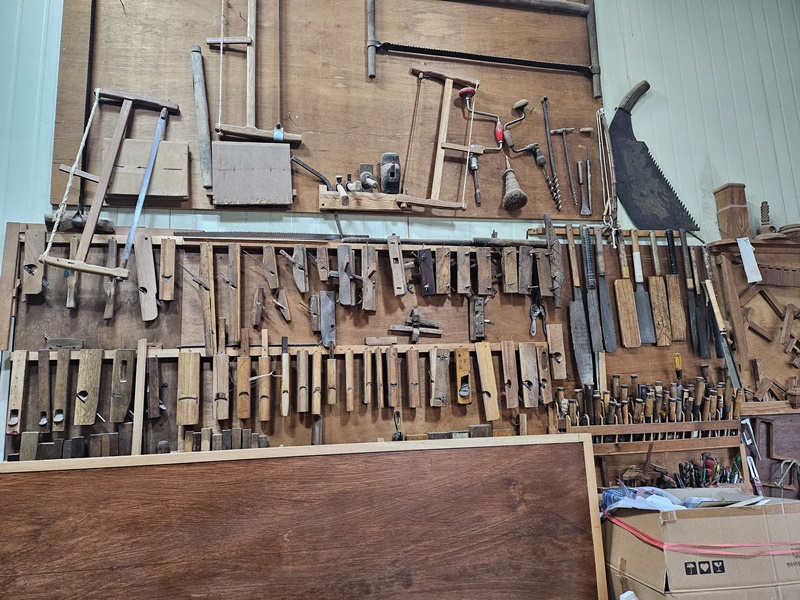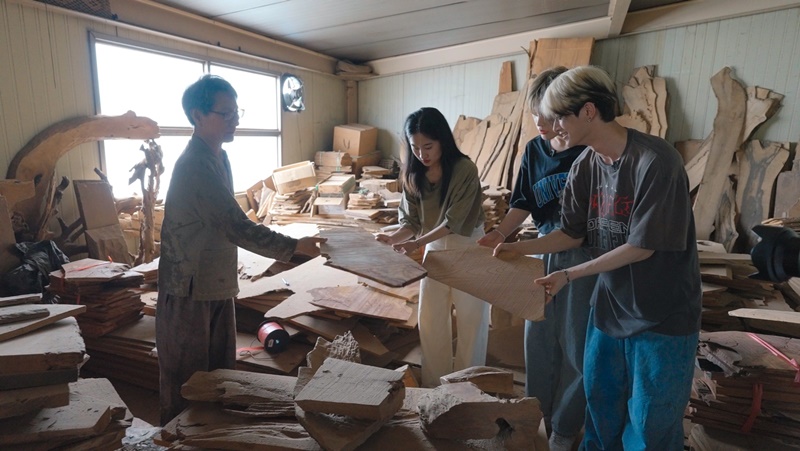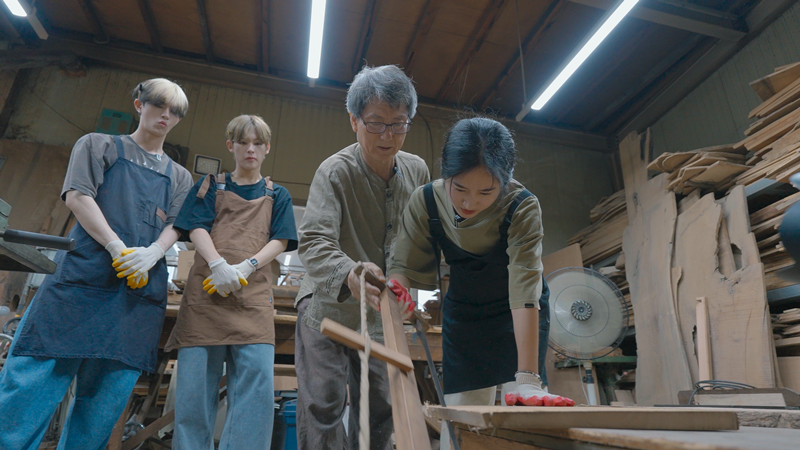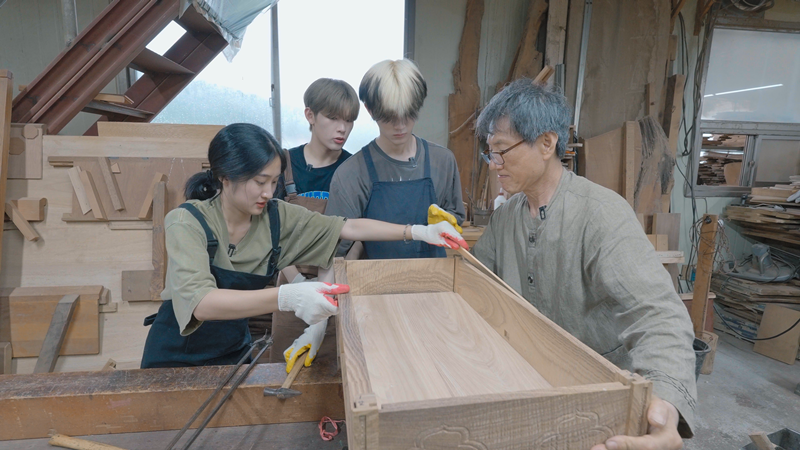- 한국어
- English
- 日本語
- 中文
- العربية
- Español
- Français
- Deutsch
- Pусский
- Tiếng Việt
- Indonesian
By Cao Thi Ha
On behalf of Korea.net, I visited on Sept. 2 the township of Myeongseok-myeon in Jinju, Gyeongsangnam-do Province, to appear in the final episode of "Ko-Workers," a program on Korea.net's official YouTube channel.
The series' conclusion was on somokjang (joinery artisan) Jeong Jin-ho and was filmed at his small workspace. In 2004, he was named Intangible Cultural Heritage No. 29 for his craft.
Somokjang is a joiner who makes furniture from wood unlike a daemokjang, who uses wood to make larger traditional structures like a house, palace or temple.
Jeong said, "Somok (joinery) is work you do alone and isn't something you can learn in a day or two. It requires 10 years or more to learn all the techniques and create something you can call a work of art."

The tools of somokjang (joinery artisan) Jeong Jin-ho are neatly arranged at his workspace in the township of Myeongseok-myeon in Jinju, Gyeongsangnam-do Province. (Cao Thi Ha)

Somokjang (joinery artisan) Jeong Jin-ho (left) on Sept. 2 explains categorizing wood to make furniture to Korea.net staff writer Cao Thi Ha (second from left) and K-pop boy band XODIAC members Leo (right) and Gyumin at Jeong's workspace in the township of Myeongseok-myeon in Jinju, Gyeongsangnam-do Province. (OSSC Production Team)
Jeong showed how to dehydrate wooden boards, the most important step of the joinery process. He said he cuts trees, exposes them outdoors to sunshine and rain, and dries them for three to five years.
After all moisture in a tree is drained, it is cut and used to make furniture, he added, with the pattern varying depending on how the wood is cut.
I learned how to classify the trees as dead, living or in between based on the colors of desiccated wood pieces. Jeong said, however, that knowing how to categorize them like this is far from easy without 10 years or more of experience.

Somokjang Jeong Jin-ho (second from right) on Sept. 2 explains how to cut wood with a hacksaw at his workspace in the township of Myeongseok-myeon in Jinju, Gyeongsangnam-do Province. (OSSC Production Team)
Gyumin and Leo, two of the nine members of the K-pop boy group XODIAC, were somokjang apprentices for the day and tried making seoan, a traditional table for reading at a Hanok (traditional house). Befitting a lifestyle of sitting on the floor, it has a low height and small size for reading.
First, we three cut only the necessary parts of a wooden board to make the floor and wings of a seoan. When we tried cutting it with a hacksaw, Jeong grabbed the tool with one hand and showed how to cut it. It looked easy to cut but when I tried it, the hacksaw instantly got stuck in the wood and did not budge.
It took several attempts to realize that I had to tilt the hacksaw by 45 degrees and pull it slowly at a certain frequency.
Next, we cut several small rectangular pieces of wood with a light saw and used a plane to smooth the wooden surface.
Afterwards, we cut off the corners of the wood with a chisel and drilled holes to create joints so that the wooden boards could be joined without nails.
Then we assembled the arranged wooden boards and applied glue made from cowhide to the adjoining areas to firmly fix them.

Joinery artisan Jeong Jin-ho (right) on Sept. 2 explains the seoan production process at his workspace in the township of Myeongseok-myeon in Jinju, Gyeongsangnam-do Province. (OSSC Production Team)
Gyumin, who made a seoan with the joiner's help, said, "Seeing how wooden furniture is made made me happy over understanding how our traditional furniture is so strong and lasts long."
"The easiest part was assembling them like Legos and the hardest part was sawing," Leo added. "It was difficult because we had to make them one by one but it was fun making furniture myself."
Debuting in April, "Ko-Workers" features master artisans of traditional culture like makgeolli (milky rice wine), pottery, lacquer and Hanji (traditional paper). All 20 episodes are available on Korea.net's official YouTube channel: (www.youtube.com/@GatewayToKorea/videos).
shinn11@korea.kr
Most popular
- Grammy-winning producer calls Suga of BTS 'amazing artist'
- 'Universal love, family' themes fuel success of 'King of Kings': director
- Council sets minimum hourly wage in 2026 at KRW 10,320
- Expansion of foreign app system raises tourist convenience
- Nat'l population diversity rose nearly 8% from 2018-22: study
